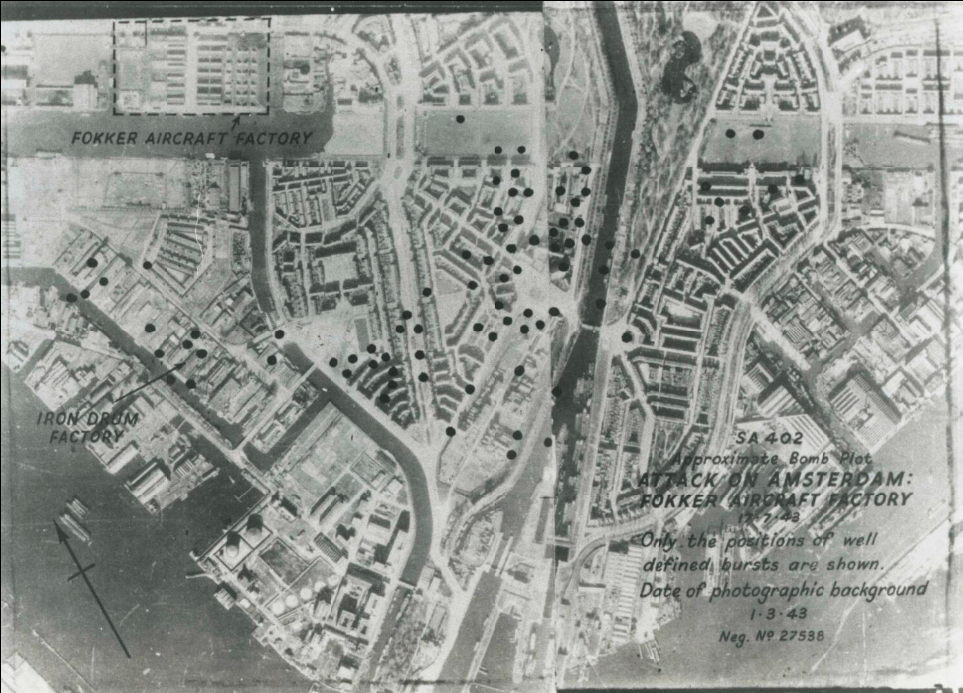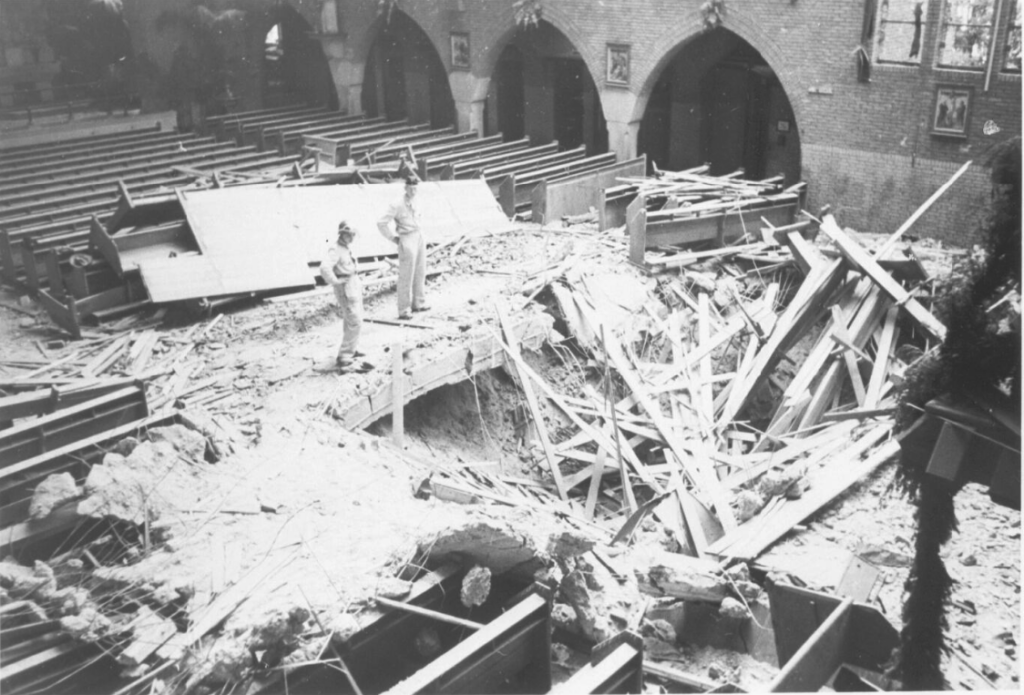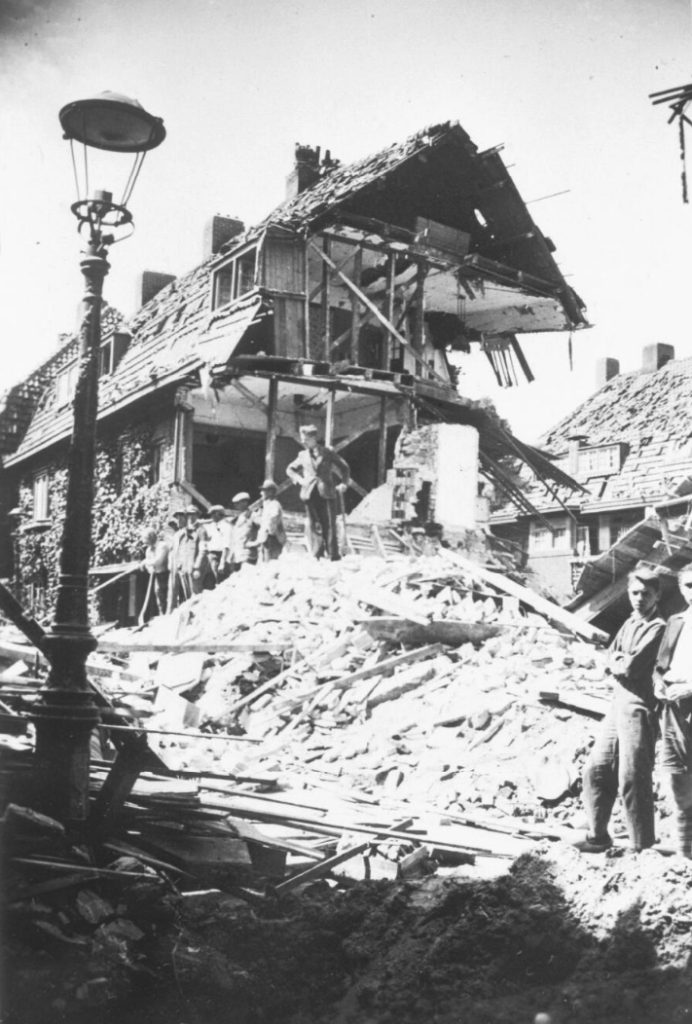“The people here in Amsterdam haven’t experienced anything yet, which is most noticeable when the air raid alarm goes off, because they walk on as calm as can be or look at the English planes, drawing such nice little lines in the sky,” writes thirteen-year-old Henk Duijm in his diary on the eve of the bombing of Amsterdam-Noord. He is an expert by experience because his parental home was destroyed in the bombing of Rotterdam on May 14, 1940. After some rambling around, his parents were assigned a house north of the IJ River. Both Henk and his three-year-old sister Maria keep a diary during the occupation period.

On the morning of July 17, 1943, American bombers carried out an attack on the Fokker factory on Papaverweg in Amsterdam-North. The German occupation forces had laid claim to the factory and used it to produce military equipment. Due to poor weather conditions, the inexperienced fighter pilots failed to hit the target. The bombs fell in the middle of the Van der Pek neighborhood, Bloembuurt and Vogelbuurt. That day, 185 civilians were killed.
One projectile pierced the roof of St. Rita Church where hundreds of people had just gathered to celebrate the parish’s twenty-fifth anniversary. Fortunately, the bomb exploded only when it was deep underground, limiting the number of fatalities to 11. In the adjacent St. Rosa convent, seven nuns were killed. Further down Meeuwenlaan, the packed waiting room of a general practice was hit, killing 29. The police station on Adelaarsweg was destroyed, killing three officers and several arrestees.

Henk Duijm is one of the children celebrating the anniversary in the Rita Church. Near the end of the mass, the air alarm sounds, and a moment later churchgoers hear loud bangs. In his diary, Henk writes, “The church thumps, the ground shakes and we hear bombs screeching and striking and the tremendous explosions. The children become anxious and many begin to cry. Then suddenly I see the back part of the church break open: pieces of wall fall over and the church suddenly becomes dark as all the lights go out and the debris and dust make the whole thing even darker.”
Henk ends up under a pew and gropes his way to the exit. The Van der Pekstraat is dirty and slippery because of burst water pipes. Bombs have exploded in the planters in the middle of the street so that “mud has slammed against the houses and the streets are full of slush.”
Henk runs to his home at Sleutelbloemstraat 2 over shards of broken roof tiles. But he finds only a pile of stones with the roof sloping on top. After a long time and with great difficulty, his mother, sister Maria and little brother Piet are dragged out alive from under the rubble.
While Henk was at the church, his mother and sister were cleaning the house. In her diary, Maria writes that she jokingly said to her mother, “I’d better not go on dusting, because if a bomb falls I will have done it for nothing.” Moments later they heard a whooshing sound followed by a loud bang: “The floor slipped under our feet and the three of us tumbled down. As we fell the stones and pieces of wood pounded on our heads, backs and everywhere […] our mouths were full of dust and bits of debris.” Maria and her little brother Pete got trapped under the banister. Ten centimeters above her mother’s head, a large chunk of the chimney was stuck. Mother lay on her back with her legs dangling in a hole, her “dark blue raincoat was white with chalk.” After long anxious moments, the block chief of the air raid defence freed mother, Maria and Pete.
The entire family of Henk and Maria Duijm was spared and was later assigned a house in Amsterdam East.
The diaries of Henk and Maria Duijm are included in collection 244 Diaries and ego documents under numbers 1808 and 1807, respectively.
NIOD’s image collection includes a series of photographs of the damage caused by the bombing.

Author: René Pottkamp (Senior Associate Digitization and Preservation)



4 Responses
How does thirteen-year-old Henk Duijm describe the attitude of the people in Amsterdam when the air raid alarm goes off, based on his diary entry?
Regard Telkom University
Actually Henk doesn’t reflect much on the behaviour of other people, he focusses on his own experiences and those of his family.
He hears the air raid alarm when he is in church and notes “well, nothing special, this happens all the time”. At home, his mother and sister carry on with their business when they hear the alarm. So it seems that the air raid alarm doesn’t cause much panic.
What insights into the bombing of Amsterdam Noord can be found in children’s diaries on the site?
Regard Telkom University
The diaries of Henk and Maria are the only written eyewitness accounts of children I know of. He only recalls his own experiences and that of his family. Being a child he doesn’t reflect much, only noticing that his neighbourhood is badly damaged.
You might want to check this site: http://getuigenverhalen.nl/projecten/geallieerde-bombardementen-in-amsterdam-noord-op-de-fokkerfabriek-in-juli-1943 which holds spoken interviews with people who were children at the time of the attack. However the stories are in Dutch.